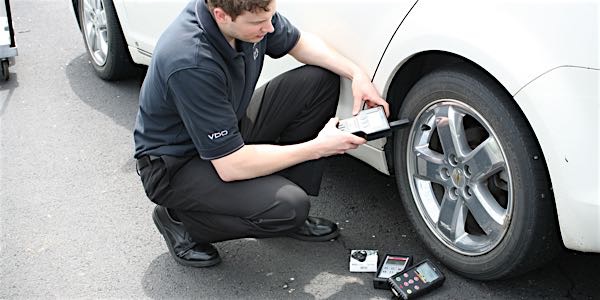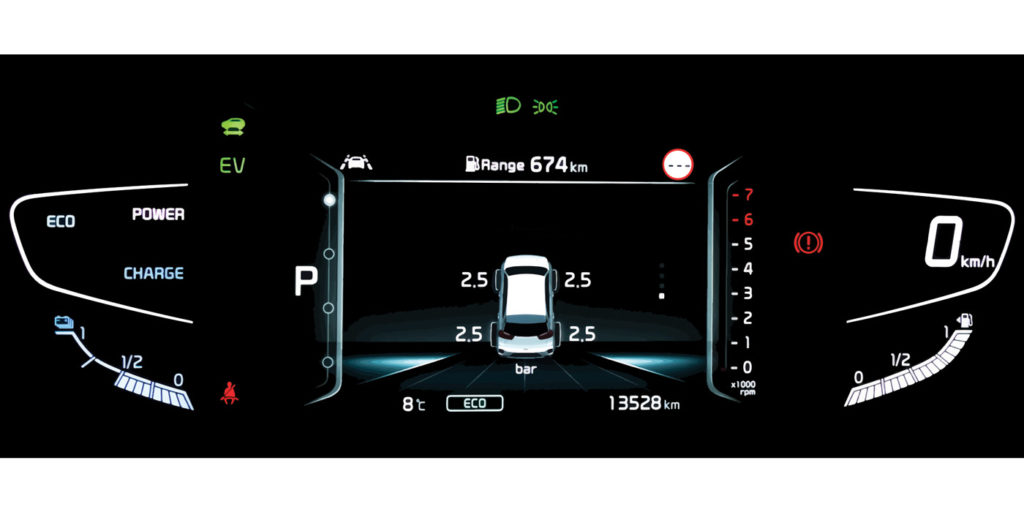September 2017 marked the 10-year anniversary of mandatory tire pressure monitoring systems (TPMS). During these past 10 years, more than 147-million vehicles were sold with TPMS. If you multiply the number by four, it means that there are more than 590-million tire pressure sensors that will need replacement in the future.
Consumers are Waking Up to the Benefits of TPMS
In 2010, only 46 percent of consumers could identify the TPMS light and what it indicated about their tires. In 2014, the same survey revealed that consumer awareness had reached 58 percent.
The Market Will Provide Solutions
A decade ago, replacement sensors were very expensive. The average sensor cost around $90 to $100. Most replacement sensors were direct-fit and often only available at new-car dealers.
In the past 10 years, we have seen an explosion of replacement sensor programs. New technologies like universal and programmable sensors have not only reduced the costs of sensors, they have also made it possible to cover a significant percentage of the population of TPMS-equipped vehicles with less inventory.
TPMS is Making a Difference to the Environment
In 2006, the U.S. Department of Energy estimated that 3.56-million gallons of gas are wasted each day because of incorrectly inflated tires. They also estimated that properly inflated tires could reduce a vehicle’s carbon footprint by 327 pounds per year.
If you consider more than half of the 272-million vehicles on the road have TPMS, the impact to the environment has to be substantial even if it can’t be directly measured.
TPMS is Keeping Consumers Safe
A 2012 study by the National Highway and Transportation Safety Administration (NHTSA) found vehicles with tires underinflated by 25 percent or more to be three times more likely to be involved in an accident. In a 2011 survey, NHTSA showed that TPMS was 55.6 percent effective at preventing severe underinflation.
These numbers drive home that TPMS is a vital safety system for consumers. Choosing not to service the TPMS can have a grave impact on the customer.
Dancing Around Sensors Does Not Work
In the early days of TPMS, it was common for a technician to leave the sensor in the rim when the tire was dismounted and mounted. The fear was that the sensor would be damaged or a service kit was not available.
But, shops have learned avoiding sensor service can cause more problems than it solves. Many shops have seen customers come back after replacing a tire due to a slow leak caused when the sensor was disturbed during service. Also, shops have realized that not replacing the service kit can result in dry rot that can cause a slow leak.
The availability of TPMS service kits has increased dramatically in the past 10 years. With a large population of vehicles with TPMS, stocking service kits is mandatory.
Sell Sensors as a Set
If a single sensor has reached the end of its lifespan, replacing all sensors at the same time is highly recommended. Similar to headlights, once one sensor dies, the rest are likely to be close behind. The same is true for corroded valve stems.
Check the Spare
Ten years ago, many people predicted that spare tires would go the way of tail fins and pop-up headlights. But, run-flat tires and cell phones have not replaced spares. In fact, more vehicles are including full-sized spares.
Rookie techs often forget the TPMS sensor in the spare tire because it is under the vehicle or in the trunk. If the spare tire sensor is not relearned or serviced, it typically results in a comeback.
What is in store for the next 10 years of TPMS? It is tough to say. Many think it could be a radical shift in sensor technology. Some new concepts have the TPMS sensor moving to the tire to provide more accurate temperature measurements. Other new technologies will include embedded sensors in the sidewall and tread that can measure what is going on at the contact patch.














